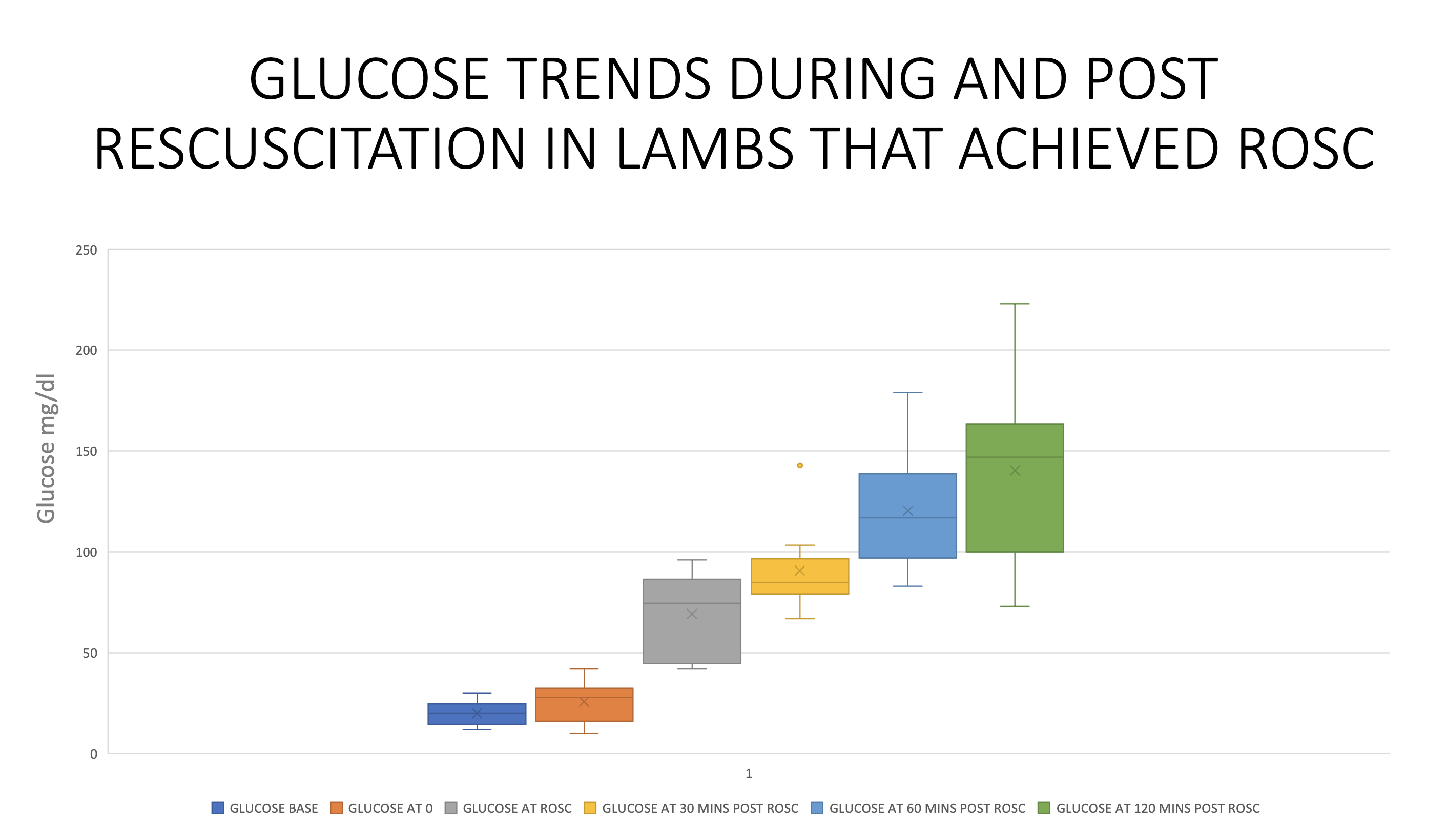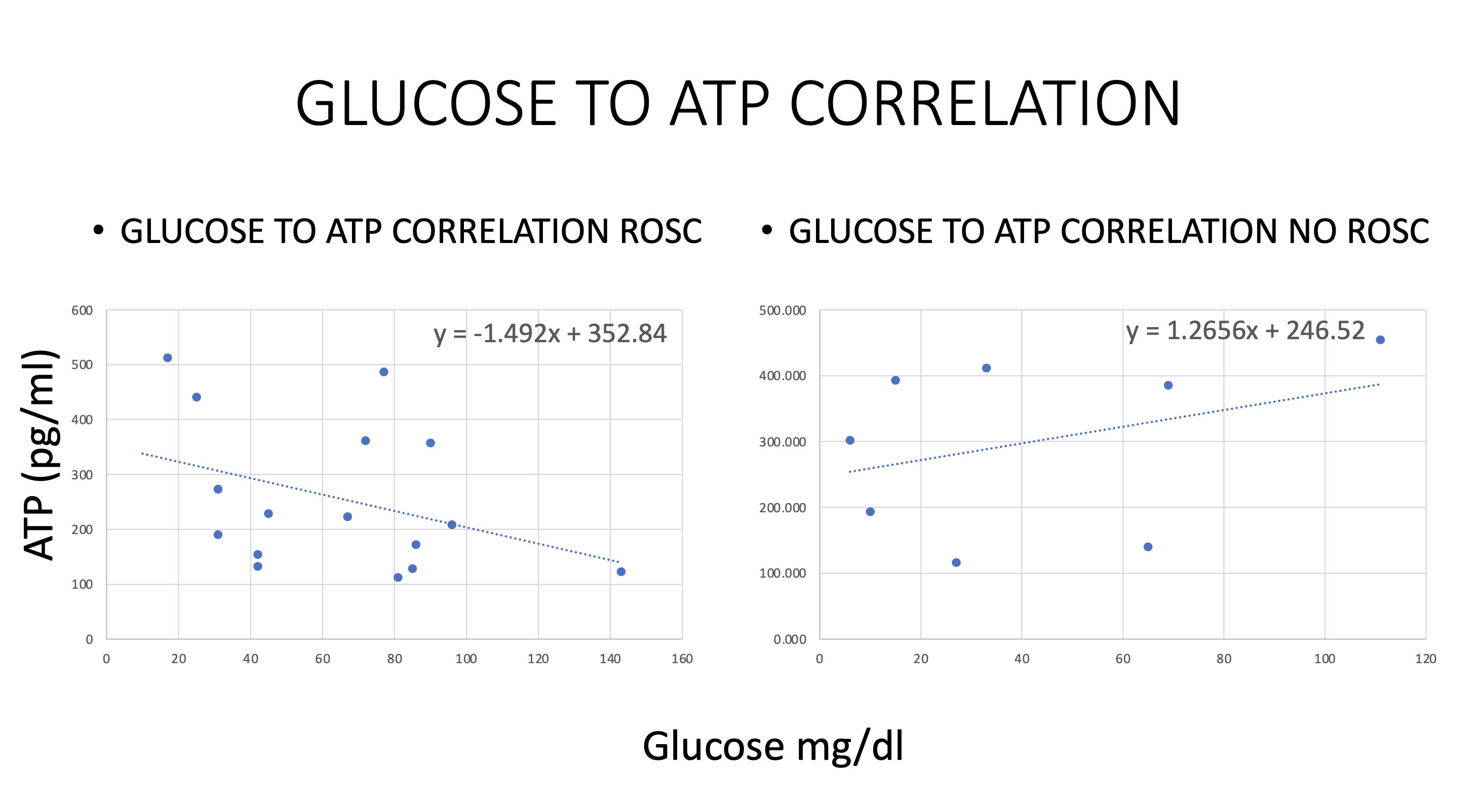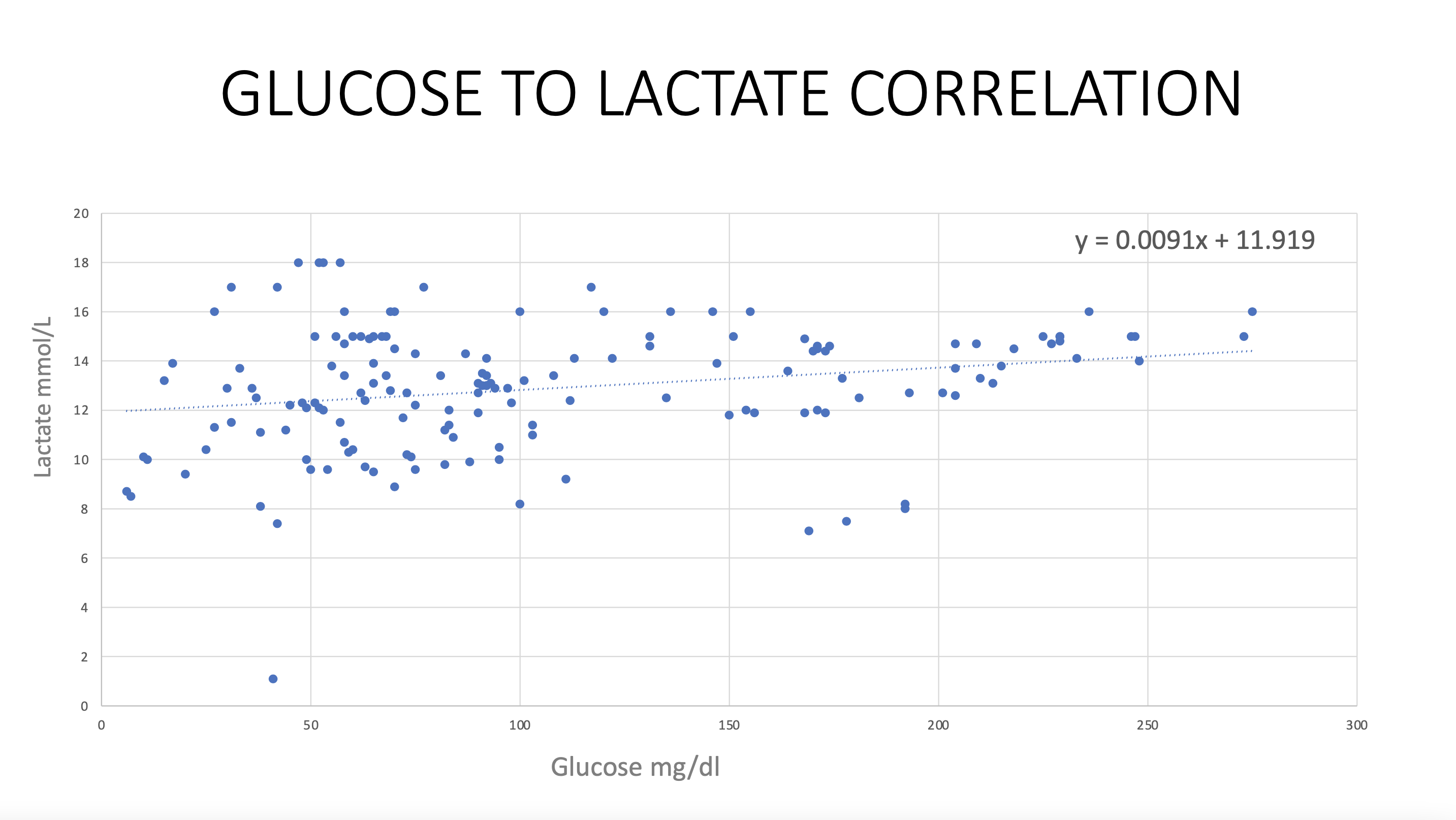Back
Background: Glucose to Lactate ratio has been shown to be a risk marker for HIE in neonates undergoing therapeutic hypothermia. To our knowledge there are no studies investigating the role of glucose, glucose to adenosine triphsosphate (ATP) ratio, glucose to lactate ratio and their association with return of spontaneous circulation.
Objective: We aimed to evaluate the role of glucose to ATP correlation and glucose to lactate correlation in an term ovine model of cardiac arrest and understand the difference between the lambs that achieved ROSC compared to lambs that did not achieve ROSC.
Design/Methods:
Near-term lambs 139 - 141 days were instrumented and cardiac arrest was induced by umbilical cord occlusion. These ovine models required extensive resuscitation and blood sugars were collected as part of blood gas analysis at baseline, at cardiac arrest before the start of Resuscitation, and every minute during resuscitation until ROSC or 20 min of resuscitation. Glucose and lactates were obtained with every blood gas for 20 minutes of resuscitation or until ROSC and ATP values are obtained at regular timed intervals. We compared the glucose to lactate correlation and glucose to ATP correlation in lambs that achieved ROSC compared to lambs that did not achieve ROSC .
Results: Glucose, lactate and ATP levels of 5 lambs who achieved ROSC were compared to 5 lambs who did not achieve ROSC. Lambs in ROSC group had lower glucose to lactate ratio (4.38) compared to lambs that did not achieve ROSC (7.51). Glucose to ATP levels did not have a significant correlation.
Conclusion(s): Our translational study suggests that the glucose to lactate ratio >1.28 is associated severe asphyxia in a controlled setting and supports the findings mentioned by Galderisi et al. Blood glucose levels did not correlate with ATP levels. This is probably secondary to stress hormones during resuscitation that inhibit glucose metabolism due to severe asphyxia.



Neonatal/Infant Resuscitation
Neonatal/Infant Resuscitation 3
690 - Glucose, Lactate, & Adenosine Triphosphate levels during resuscitation in an ovine model of complete cardiac arrest.
Monday, May 1, 2023
9:30 AM – 11:30 AM ET
Poster Number: 690
Publication Number: 690.444
Publication Number: 690.444
Arun Prasath, Jacobs School of Medicine and Biomedical Sciences at the University at Buffalo, Buffalo, NY, United States; Sylvia F. Gugino, State University of New York at Buffalo, Buffalo, NY, United States; Justin Helman, University at Buffalo, Grand Island, NY, United States; Lori C. Nielsen, SUNY Buffalo, buffalo, NY, United States; Nicole Bradley, University at Buffalo, Buffalo, NY, United States; Mary Divya Kasu, John R. Oishei Children's Hospital, Buffalo, NY, United States; Hamza F.. Abbasi, University at Buffalo, east amherst, NY, United States; Clariss Blanco, Jacobs School of Medicine and Biomedical Sciences at the University at Buffalo, Buffalo, NY, United States; Mausma Bawa, Boston Children's Hospital, Brookline, MA, United States; Munmun Rawat, Jacobs School of Medicine and Biomedical Sciences at the University at Buffalo, Buffalo, NY, United States; Praveen Chandrasekharan, Jacobs School of Medicine and Biomedical Sciences at the University at Buffalo, Buffalo, NY, United States

Arun Prasath, MD
Neonatal-Perinatal Medicine Fellow
Jacobs School of Medicine and Biomedical Sciences at the University at Buffalo
Buffalo, New York, United States
Presenting Author(s)
Background: Glucose to Lactate ratio has been shown to be a risk marker for HIE in neonates undergoing therapeutic hypothermia. To our knowledge there are no studies investigating the role of glucose, glucose to adenosine triphsosphate (ATP) ratio, glucose to lactate ratio and their association with return of spontaneous circulation.
Objective: We aimed to evaluate the role of glucose to ATP correlation and glucose to lactate correlation in an term ovine model of cardiac arrest and understand the difference between the lambs that achieved ROSC compared to lambs that did not achieve ROSC.
Design/Methods:
Near-term lambs 139 - 141 days were instrumented and cardiac arrest was induced by umbilical cord occlusion. These ovine models required extensive resuscitation and blood sugars were collected as part of blood gas analysis at baseline, at cardiac arrest before the start of Resuscitation, and every minute during resuscitation until ROSC or 20 min of resuscitation. Glucose and lactates were obtained with every blood gas for 20 minutes of resuscitation or until ROSC and ATP values are obtained at regular timed intervals. We compared the glucose to lactate correlation and glucose to ATP correlation in lambs that achieved ROSC compared to lambs that did not achieve ROSC .
Results: Glucose, lactate and ATP levels of 5 lambs who achieved ROSC were compared to 5 lambs who did not achieve ROSC. Lambs in ROSC group had lower glucose to lactate ratio (4.38) compared to lambs that did not achieve ROSC (7.51). Glucose to ATP levels did not have a significant correlation.
Conclusion(s): Our translational study suggests that the glucose to lactate ratio >1.28 is associated severe asphyxia in a controlled setting and supports the findings mentioned by Galderisi et al. Blood glucose levels did not correlate with ATP levels. This is probably secondary to stress hormones during resuscitation that inhibit glucose metabolism due to severe asphyxia.



